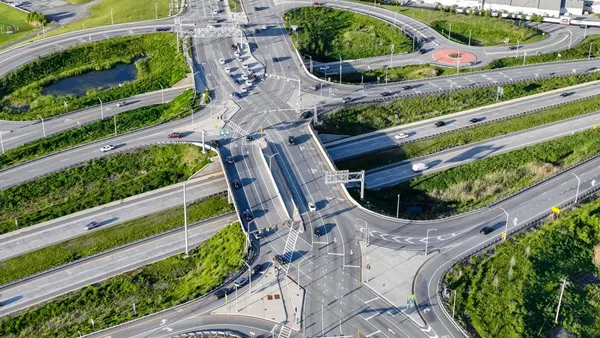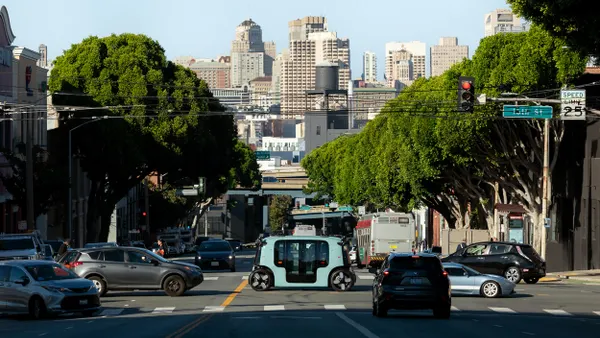Dive Brief:
- New York City has updated its plans for the Brooklyn-to-Queens streetcar, called the Brooklyn Queens Connector (BQX), following the completion of a feasibility study. The streetcar initially was proposed in 2016.
- The 11-mile route will have 26 stops spaced approximately half a mile apart, with an estimated total cost of $2.73 billion, up from the original estimate of $2.5 billion.
- An environmental impact study is scheduled to begin this winter, with construction expected to begin in 2024 and end in 2029.
Dive Insight:
The BQX will run along the Brooklyn-Queens waterfront and aims to bring transportation to some areas that are underserved by other modes, especially the subway. Despite the transportation deserts, the waterfront stretch has experienced significant growth, further highlighting the mobility difficulty. "Now it's time for our transit system to catch up,” said Mayor Bill de Blasio in a statement.
Even though the revised route is shorter than what was initially proposed, 11 miles is still a significant distance for a streetcar. Some people have criticized other cities' streetcar systems for being too short in complex, expansive urban areas. For example, Washington, DC's streetcar system is 2.5 miles long, the Atlanta Streetcar system is 2.7 miles, Detroit's QLine is 3.3 miles and Milwaukee's soon-to-open The Hop is 2.5 miles.
Transportation experts note not all streetcars are intended for an alternative transit option; some are meant to drive economic development. New York is selling the BQX as both. It is touted as providing a link between mixed-income neighborhoods and jobs as well as other transit options, such as subways, ferries, buses and bike-share. It will also be designed for "supporting transit-oriented development."
“BQX taps into state-of-the-art transit tech to respond to and build upon the evolution of the Brooklyn Queens Waterfront,” said Deputy Mayor for Housing and Economic Development Alicia Glen in a statement. “With more than half a million people now living and working along the projected line and further growth to come, BQX will transform how our city moves."
One major hurdle city leaders will have to overcome is the project needs to secure $1 billion in federal funding, historically a challenge for such projects.










